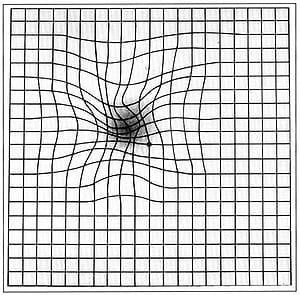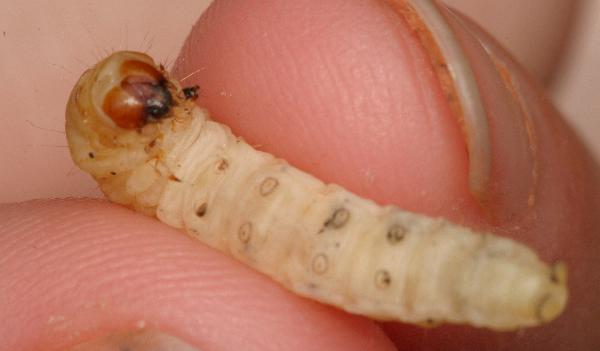
TAU researchers develop groundbreaking wireless material capable of sparking neuronal activity in response to light
The aging process affects everything from cardiovascular function to memory to sexuality. Most worrisome for many, however, is the potential loss of eyesight due to retinal degeneration.
New progress towards a prosthetic retina could help alleviate conditions that result from problems with this vital part of the eye. An encouraging new study published in Nano Letters describes a revolutionary novel device, tested on animal-derived retinal models, that has the potential to treat a number of eye diseases. The proof-of-concept artificial retina was developed by an international team led by Prof. Yael Hanein of Tel Aviv University‘s School of Electrical Engineering and head of TAU’s Center for Nanoscience and Nanotechnology and including researchers from TAU, the Hebrew University of Jerusalem, and Newcastle University.
“Compared to the technologies tested in the past, this new device is more efficient, more flexible, and can stimulate neurons more effectively,” said Prof. Hanein. “The new prosthetic is compact, unlike previous designs that used wires or metals while attempting to sense light. Additionally, the new material is capable of higher spatial resolution, whereas older designs struggled in this area.”
A natural shape
The researchers combined semiconductor nanorods and carbon nanotubes to create a wireless, light-sensitive, flexible film that could potentially replace a damaged retina. The researchers tested the new device with chick retinas which were not yet light sensitive to prove that the artificial retina is able to induce neuronal activity in response to light.
Patients with age-related macular degeneration (AMD), which usually affects people age 60 or older who have damage to a specific part of the retina, will stand to benefit from the nanotube device if it is proved compatible in animals over the long term.
The Latest on: Artificial retina
[google_news title=”” keyword=”Artificial retina” num_posts=”10″ blurb_length=”0″ show_thumb=”left”]
via Google News
The Latest on: Artificial retina
- Apple rolls out M4 chipon May 8, 2024 at 5:40 pm
Apple this week unveiled the M4 chip, which will power enhanced performance on the new iPad Pro premium tablet. Built using second-generation 3-nanometer technology, the M4 is a system on a chip (SoC) ...
- Bigger, faster, thinner, lighter iPad Pro and iPad Air models coming to tackle AIon May 8, 2024 at 1:12 pm
Apple launched its first artificial intelligence product, the M4 Apple silicon chip in a new iPad Pro. Steve Jobs predicted the iPad would replace laptops.
- Apple M4 Chip With On-Device AI, Ray Tracing and Ultra Retina XDR Display Support Launchedon May 8, 2024 at 12:53 am
Apple says the M4 chip was designed for its new display engine that enables the 'Tandem OLED' technology on the iPad Pro (2024).
- Apple debuts its thinnest iPad with new M4 chipon May 7, 2024 at 9:45 pm
The iPad Pro aims to make use of the growing field of artificial intelligence, which is in part due to the new M4 chip used in its build. There will be two different models available from this iPad, ...
- Apple introduces M4 chip in the new iPad Proon May 7, 2024 at 6:34 pm
Apple has introduced the M4 chip in the new iPad Pro. The M4 chip has allowed Apple to make the iPad Pro extremely thin and give it an Ultra Retina XDR display, all while delivering a big increase in ...
- Barnstable Brown Diabetes Center introduces AI-powered retinal screeningon May 1, 2024 at 6:14 am
UK HealthCare’s Barnstable Brown Diabetes Center is proud to be the first and only location in the state using a new state-of-the-art camera with artificial intelligence (AI) to detect retinal ...
- Enter Robots: Are We Ready?on April 25, 2024 at 11:09 am
Beyond robotic limbs is the development of sensory robotics: an artificial retina/eye allowing the blind to see again or an artificial cochlea to grant hearing to the deaf (1,2). Add the newest ...
- Enter Robots, Are We Ready?on April 24, 2024 at 5:00 pm
Beyond robotic limbs is the development of sensory robotics: an artificial retina/eye allowing the blind to see again or an artificial cochlea to grant hearing to the deaf (1,2). Add the newest ...
- Are bionic eyes really in sight?on April 21, 2024 at 5:00 pm
Scientists say an artificial retina they have developed could help thousands of people who have lost their sight because of diseases or accidents. The eye, which will be given to a group of five ...
- AI makes retinal imaging 100 times faster, compared to manual methodon April 9, 2024 at 5:00 pm
The work appears in Communications Medicine. "Artificial intelligence helps overcome a key limitation of imaging cells in the retina, which is time," said Johnny Tam, Ph.D., who leads the Clinical ...
via Bing News











